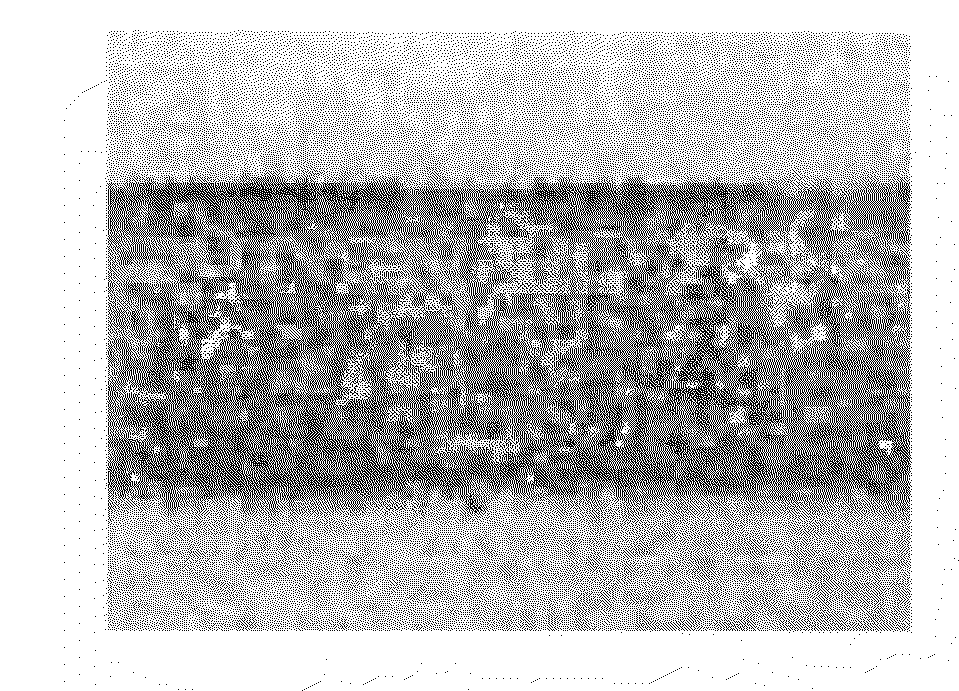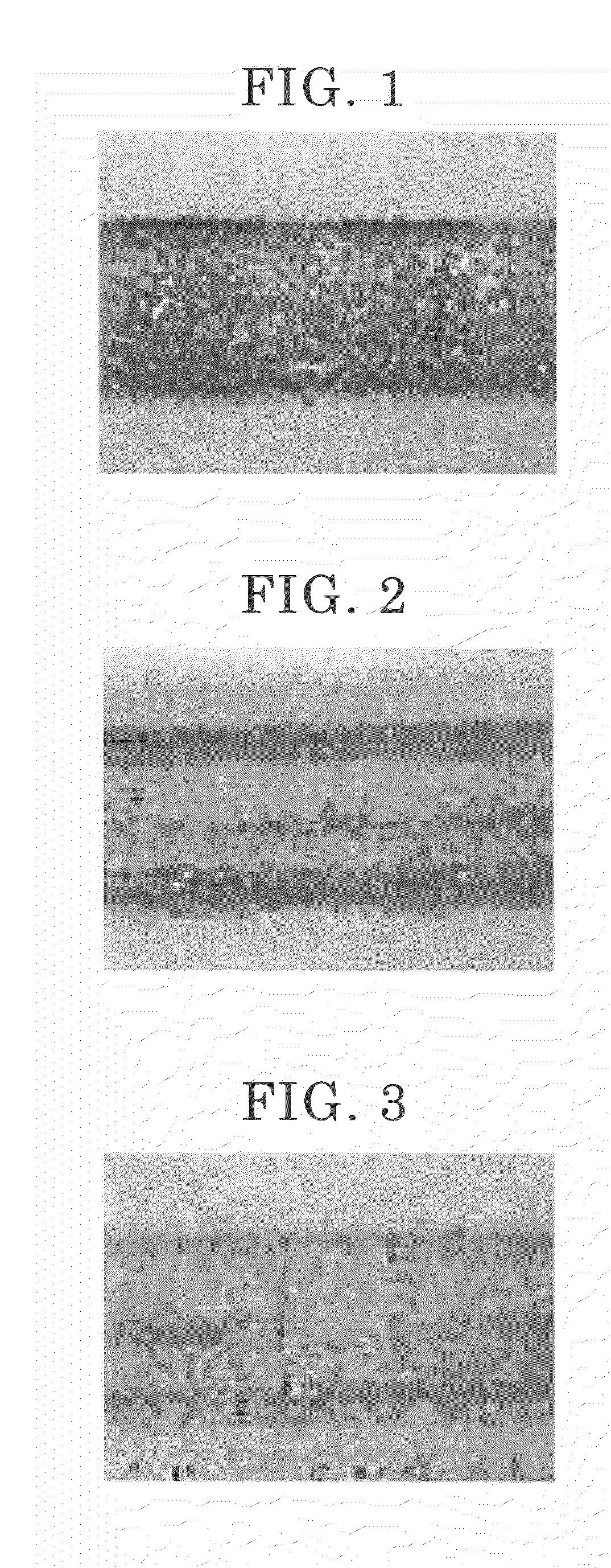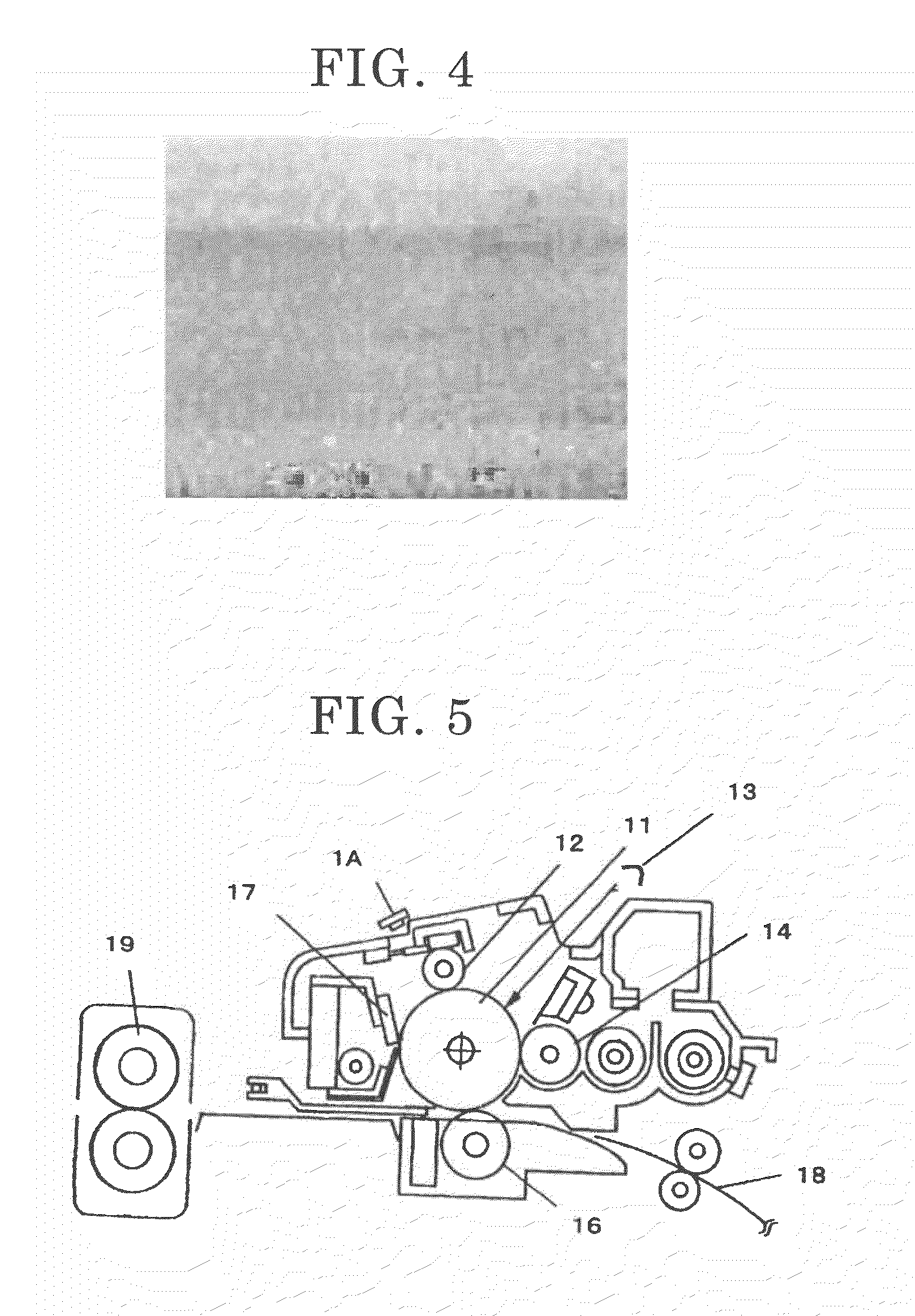Toner, and developer
a technology applied in the field of toner and developer, can solve the problems of difficult to satisfy the low-temperature fixability, degrade the storage stability of toner, and inferior pulverization of toner at the time of production, so as to improve the smear resistance of the developing roller, improve the pulverization efficiency, and reduce the occurrence of odor
- Summary
- Abstract
- Description
- Claims
- Application Information
AI Technical Summary
Benefits of technology
Problems solved by technology
Method used
Image
Examples
examples
[0224]Hereinafter, Examples of the present invention will be described, which however shall not be construed as limiting the scope of the present invention.
[0225]In Examples and Comparative Examples described below, “softening point of polyester resin”, “glass transition temperature (Tg) of polyester resin”, “softening point of rosin”, “acid values of polyester resin and rosin”, “hydroxyl value of polyester resin”, “contained amount of low-molecular-weight component having a molecular weight of 500 or less”, “SP value of rosin”, “degree of modification of rosin with (meth)acrylic acid”, “degree of modification of rosin with fumaric acid” and “degree of modification of rosin with maleic acid” were measured in accordance with the following methods.
[0226]Using Flow Tester (manufactured by Shimadzu Corporation, CFT-500D), 1 g of each polyester-based binder resin as a sample was extruded through a nozzle having a diameter of 1 mm and a length of 1 mm by applying a load of 1.96 MPa from a...
second embodiment
Examples of Toners
—Purification of Rosin—
[0327]In a 2,000 ml volumetric distilling flask equipped with a distilling tube, a reflux condenser and a receiver, 1,000 g of a tall rosin was added, followed by distillation under reduced pressure of 13.3 kPa to collect a distillate at 195° C. to 250° C. as a fraction. Hereinafter, a tall rosin subjected to purification is referred to as an unpurified rosin A and a rosin collected as a fraction is referred to as a purified rosin B.
[0328]Each rosin (20 g) was ground in a coffee mill (National MK-61M) for 5 seconds and passed through a sieve having a sieve opening size of 1 mm, and then the rosin powder was weighed in an amount of 0.5 g in a vial for head space (20 ml). After sampling a head space gas, impurities in an unpurified rosin A and in a purified rosin B were analyzed by a head space GC-MS method, according to the manner described above. The results are shown in Table 6.
TABLE 6hexanoicpentanoicSofteningAcid valueacidacidbenzaldehyden...
third embodiment
Examples of Toners
—Synthesis of Fumaric Acid-Modified Rosin A—
[0357]In a 10 L volumetric flask equipped with a distilling tube, a reflux condenser and a receiver, 5,408 g (16 mol) of a purified rosin (SP value: 76.8° C.), 928 g (8 mol) of fumaric acid, and 0.4 g of t-butylcatecol were added. After heating from 160° C. to 200° C. over 2 hours, the reaction was performed at 200° C. for 2 hours and distillation was performed under reduced pressure of 5.3 kPa to obtain a fumaric acid-modified rosin A. The resulting fumaric acid-modified rosin A was found to have an SP value of 130.8° C. and a glass transition temperature of 74.4° C., and the degree of modification with fumaric acid was 100.
—Synthesis of Fumaric Acid-Modified Rosin B—
[0358]In a 10 L volumetric flask equipped with a distilling tube, a reflux condenser and a receiver, 5,408 g (16 mol) of a purified rosin (SP value: 76.8° C.), 557 g (4.8 mol) of fumaric acid, and 0.4 g of t-butylcatecol were added. After heating from 160° C...
PUM
| Property | Measurement | Unit |
|---|---|---|
| softening point | aaaaa | aaaaa |
| softening point Tm | aaaaa | aaaaa |
| acid value | aaaaa | aaaaa |
Abstract
Description
Claims
Application Information
 Login to View More
Login to View More - R&D
- Intellectual Property
- Life Sciences
- Materials
- Tech Scout
- Unparalleled Data Quality
- Higher Quality Content
- 60% Fewer Hallucinations
Browse by: Latest US Patents, China's latest patents, Technical Efficacy Thesaurus, Application Domain, Technology Topic, Popular Technical Reports.
© 2025 PatSnap. All rights reserved.Legal|Privacy policy|Modern Slavery Act Transparency Statement|Sitemap|About US| Contact US: help@patsnap.com



